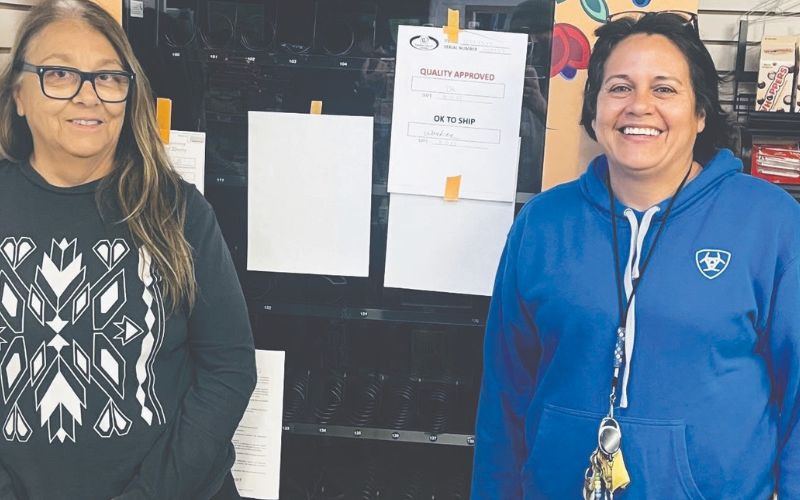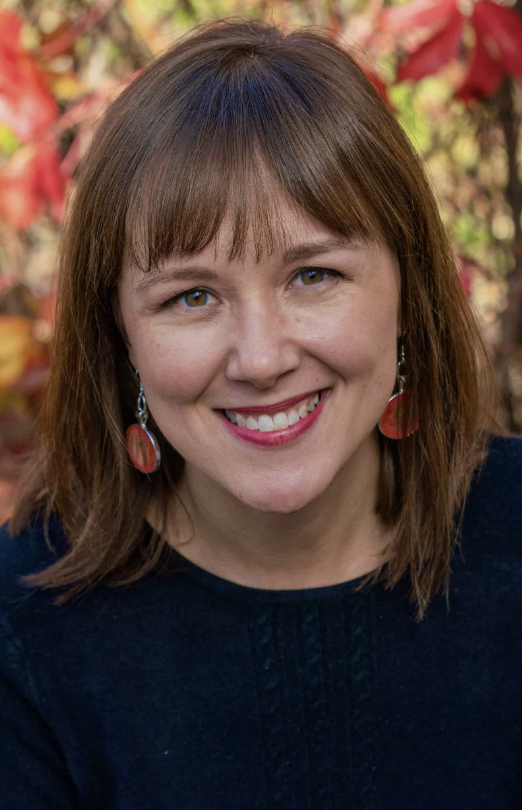
- Details
- By Elyse Wild
Toni Wakemup (Bois Forte Band of Chippewa) was at her tribe’s Mid-Winter Powwow — an event she helps organize — last year when she received a text message that would change her life.
Her cousin Jeremy Hoagland, who grew up in the same household and whom she considered a brother, had died of a fentanyl overdose.
“I got a text that said, ‘Jeremy died,’” Wakemup told Native News Online. “No one ever wants to read that text.”
She was stunned, seized by grief. She needed to get to her family, but was in such a state of shock that she was afraid to drive. Her elders who were at the powwow smudged her, over and over again, until she was grounded enough to drive safely.
“It wasn’t just a quick smudge,” she said. “It was bowl after bowl after bowl. It was the best place I could have been for that moment. It helped a lot, it helped me get where I needed to go.”
Jeremy was found dead in his home on February 5, 2023. He was surrounded by dozens of used canisters of Narcan — a life-saving opioid overdose reversal drug commonly available in nasal spray form. Wakemup thinks whoever administered the Narcan got to Jeremy too late.
Wakemup is just one of thousands of Native people who have lost a loved one to the overdose crisis. Amid a nationwide scourge of fentanyl and other illicit opioids, drug overdoses continue to rise in Indian Country at a faster rate than any other racial group. That's according to new data released by the Centers for Disease Control (CDC) last month.
Drug overdose rates have increased in most years since 2000, marking the beginning of the public health emergency known as the opioid crisis. The crisis can be marked in waves, beginning in the late 1990s with the overprescription of opioids followed by a rise in heroin-related deaths and an increase in synthetic opioid deaths over the past decade.
Today, public health experts say the opioid crisis is its “fourth wave,” distinguished by the presence of fentanyl — a synthetic opioid 100 times stronger than morphine — in other drugs such as cocaine and methamphetamine.
The newly published CDC data reveals that American Indian and Alaska Native (AI/AN) people saw the sharpest surge in drug overdose deaths from 2021 to 2022, with a 15% increase in the age-adjusted rate of drug overdose rates. The number of deaths per 100,000 Native people rose from 56.6 to 65.2, the data shows.
Health experts and Indigenous advocates point toward longstanding, gaping healthcare disparities that put Native communities in the crosshairs of the opioid epidemic.
The causes of these disparities are multifold, but ultimately are rooted in broken treaty promises that have resulted in chronically underfunded health care for Natives, according to Dr. Melissa Walls (Couchiching First Nation and Bois Forte Band of Ojibwe), co-director of the Johns Hopkins Center for Indigenous Health.
The Indian Health Service (IHS) is the primary health delivery system in Indian Country, serving approximately 2.6 million American Indians and Alaska Natives. Its 2024 budget fell $43.64 billion short of what it requested from Congress.
“At the federal level, for example, the Indian Health Service continues to be underfunded and is the primary agency at the federal level tasked with serving Indigenous people through the treaty obligation,” Walls told Native News Online. “I think it’s a basic answer of a policy not being fulfilled.”
 Dr. Melissa Walls (Couchiching First Nation and Bois Forte Band of Ojibwe), co-director of the Johns Hopkins Center for Indigenous Health. Native communities continue to bear the highest rate of overdoses, but they also have to contend with the most limited access to addiction-care treatment. A 2021 study using data from the Substance Abuse and Mental Health Services Administration (SAMHSA) showed that only 22% of specialty treatment facilities serving American Indians and Alaska Natives offer medication for opioid use disorder, and only 40% of AI/AN people receive medication-assisted treatment.
Dr. Melissa Walls (Couchiching First Nation and Bois Forte Band of Ojibwe), co-director of the Johns Hopkins Center for Indigenous Health. Native communities continue to bear the highest rate of overdoses, but they also have to contend with the most limited access to addiction-care treatment. A 2021 study using data from the Substance Abuse and Mental Health Services Administration (SAMHSA) showed that only 22% of specialty treatment facilities serving American Indians and Alaska Natives offer medication for opioid use disorder, and only 40% of AI/AN people receive medication-assisted treatment.
While a small handful of states have committed to sharing their opioid settlement funds with the federally recognized tribes within their borders, most are doing the bare minimum, Walls said.
“We need a massive paradigm shift,” Walls said. “Because when Indigenous people heal, we all heal.”
As communities across Indian Country are contending with the fallout from the opioid crisis, many are embracing harm reduction — an evidence-based public health strategy designed around reducing the adverse effects of drug use. Harm-reduction programs often include clean needle exchange, and distribution of naloxone, fentanyl testing strips, and wound care supplies.
Distributing harm reduction supplies on reservations presents challenges — spread out communities, stigma, and limited funding — but tribes are proving innovative in meeting them.
Vending machines dispensing Narcan, testing strips and other overdose prevention supplies free of cost have begun showing up across Indian Country. The Pala Band of Mission Indians installed one at the tribe's fire department last May; in September, the Eastern Band of Cherokee Indians announced it had installed 10 of the machines on tribal lands; the Mi'kmaq Nation in Maine recently installed a health vending machine at its health department, the second such machine in the state.
Wakemup is part of a group that led efforts to install two harm-reduction vending machines on the Bois Forte reservation last winter.
The machines provide the benefits of anonymity for those using them as well as data on how many harm reduction supplies are in the community.
It's crucial for tribal nations to invest in community education to reduce the stigma that harm-reduction encourages drug use, despite mounting evidence to the contrary, Walls said.
“Community education is critical,” Walls said. “And you can root those [harm reduction] practices and our traditions and our culture and really important ways, because ultimately we want to save our relatives.”
Wakemup has been in addiction recovery for five years. She credits her connection to her culture and spirit as giving her strength.
“The thing that made me strong in my recovery is that the first year I got sober, I also received my Anishinaabe name,” she said. “And that helped me connect me to my spirit.”
Wakemup and Hoegland were just a year apart in age, in the same grade at school and extremely close. He was a gifted mechanic and loved fishing. He worked on the Bois Forte Tribal Council Election Board and Wakemup said he always had a joke on hand to break the ice when meeting new people.
She hopes that people remember Jeremy and other Natives who have died from overdoses for the people they were — not just for their drug use. She believes that will help destigmatize addiction, spur compassionate policies, and save lives.
“They're still good people,” Wakemup said. “They still deserve to be treated as human beings with dignity. And don't (just) remember the drug use … remember the good things they've done here.”
More Stories Like This
Seven Deaths in Indian Country Jails as Inmate Population Rises and Staffing DropsSen. Luján Convenes Experts to Develop Roadmap for Native Maternal Health Solutions
Senate Passes Bill Aimed at Missing and Murdered Indigenous Peoples Crisis
Johns Hopkins Collecting Tribal Success Stories from $1.5B Opioid Settlement
Arizona MMIP Task Force Holds Listening Session for Survivors and Families


